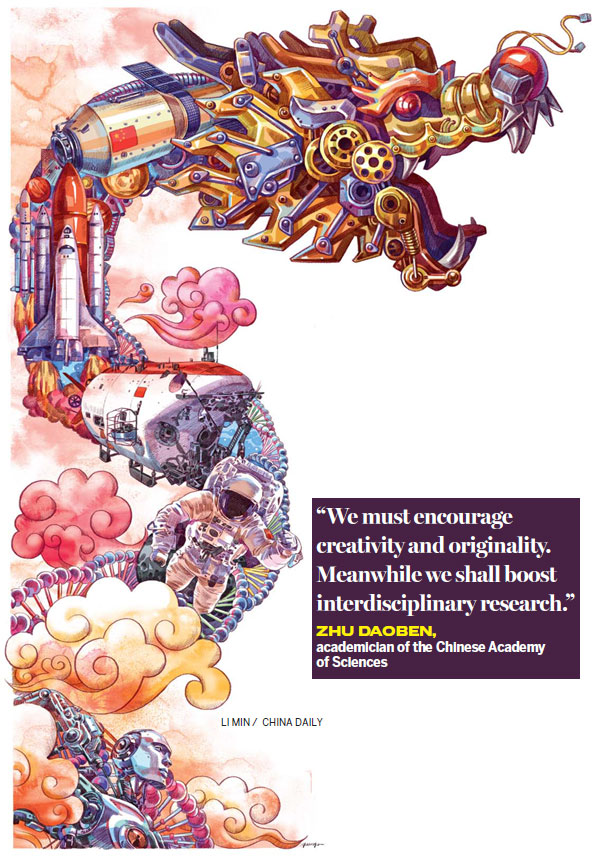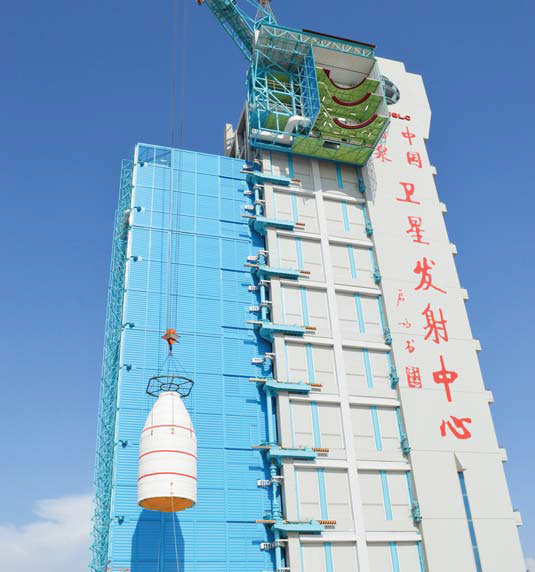Pushing the Frontiers
Updated: 2016-10-14 07:34
By Zhao Lei(China Daily Europe)
|
|||||||||
Plan sets course for massive technological advances in space, aviation and oceans, reports Zhao Lei
China will launch a number of major science and technology projects in the 13th Five-Year Plan (2016-2020), and expects to fulfill them before 2030, according to the Ministry of Science and Technology.
The projects cover a wide variety of fields such as advanced aircraft engines and gas turbines, deep-sea stations, quantum-based communications and computers, cyberspace security, big data, intelligent manufacturing, new materials and in-orbit spacecraft repair.

The projects represent the nation's strategic goals, the ministry said in a statement, adding they will be started in a certain order.
China aims to become a world leader in science and technology by 2050, the government said in May, pledging to bolster innovation and creativity.
In 2015, China invested 1.4 trillion yuan ($208 billion; 189 billion euros; 107 billion pounds) in research and development, an increase of 7.6 percent compared with 2013, the National Bureau of Statistics said.
The bureau said the investment accounted for 2.1 percent of China's GDP in 2015, adding that the country now has the world's second-largest budget for research and development, after the United States.
Zhu Daoben, an academician of the Chinese Academy of Sciences who studies chemistry, says China is eager to become a world-class powerhouse of science and technology so it will pay equal importance to basic research, industry applications and the commercialization of research findings.
"We must encourage creativity and originality. Meanwhile we shall boost interdisciplinary research," he says.
His remarks were echoed by Zhai Lixin, a senior official from the Torch High Technology Industry Development Center under the Ministry of Science and Technology. Zhai says the nation's economic restructuring can only succeed based on the support and breakthroughs of science and technology.
"We can no longer rely on imported technologies and equipment because it is impossible to buy core technologies. Therefore we must nurture extensive and unrestrained exploration in research and development," he says.
In many sectors that once depended on foreign technologies, China has begun to catch up in recent years.
For instance, the high-speed railway industry has developed new bullet trains to replace those made with Western technologies. It is also developing a next-generation bullet train that can run as fast as 400 km/h. Chinese engineers have also made an experimental ultrafast train capable of travelling around 600 km/h.
In the nuclear power field, China has designed the Hualong One third-generation nuclear reactor, which experts say is one of the most advanced in the world in terms of safety technology and standards.
The country will also fulfill the maiden flight of its indigenously-developed C919 passenger jetliner in the near future, hoping it can help break the Airbus and Boeing duopoly in the civil aviation industry.
Contact the writer at zhaolei@chinadaily.com.cn
|
The world's first quantum experiment satellite, Micius, is prepared for launch at the Jiuquan Satellite Launch Center in August. Xinhua Photo |
(China Daily European Weekly 10/14/2016 page1)
Today's Top News
Deals with Cambodia include energy, trade
Trump accused of inappropriate touching by women
China expresses condolences over death of Thai King
Chinese president arrives in Cambodia for state visit
Thai King, world's longest-reigning monarch, dies
Q3 trade growth rebounds, pressure remains
Chinese shop big in London's West End
China-Russia joint missile defense drill set for 2017
Hot Topics
Lunar probe , China growth forecasts, Emission rules get tougher, China seen through 'colored lens', International board,
Editor's Picks

|

|

|

|

|

|








